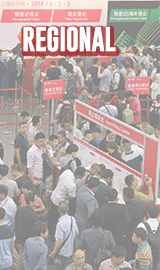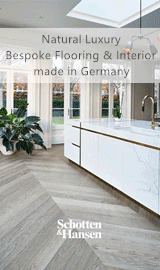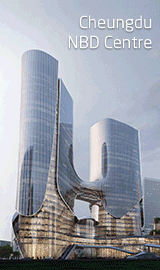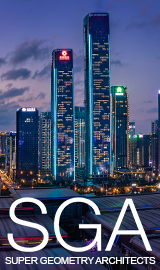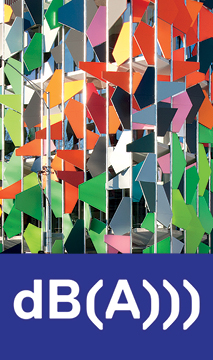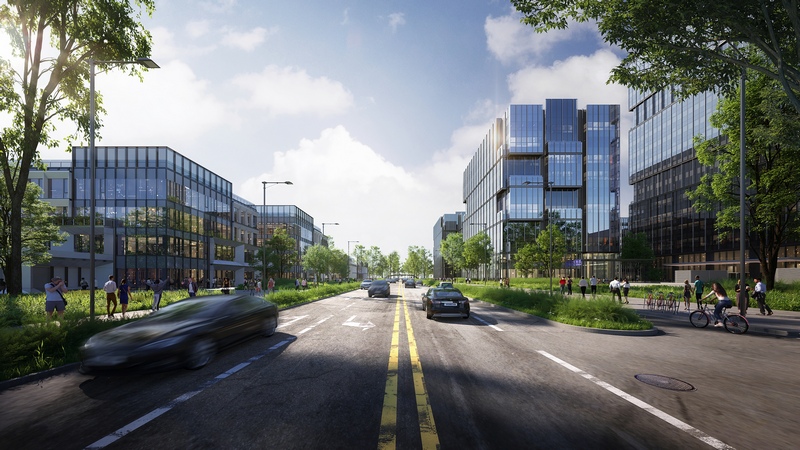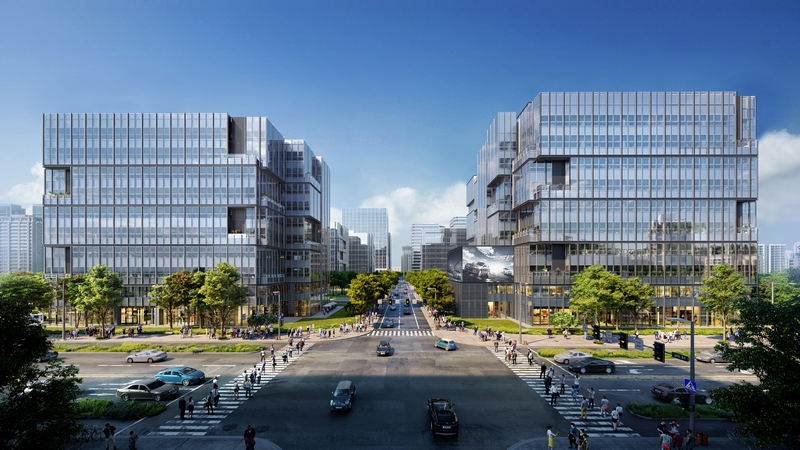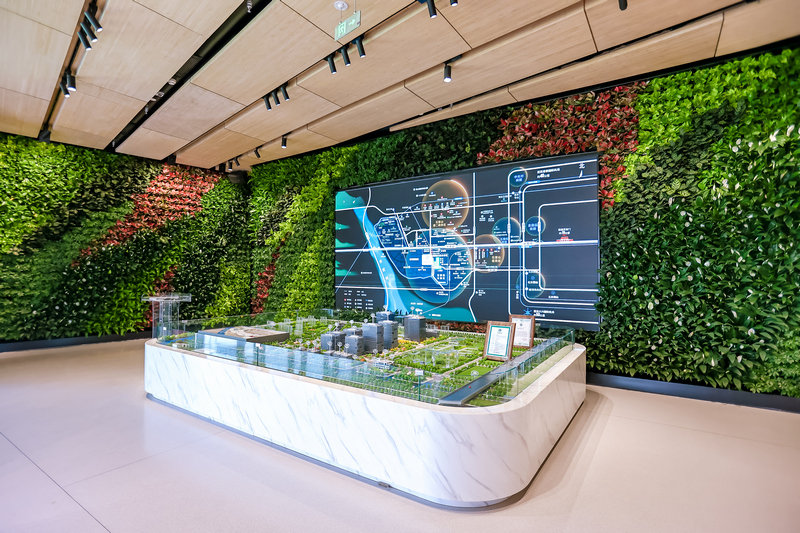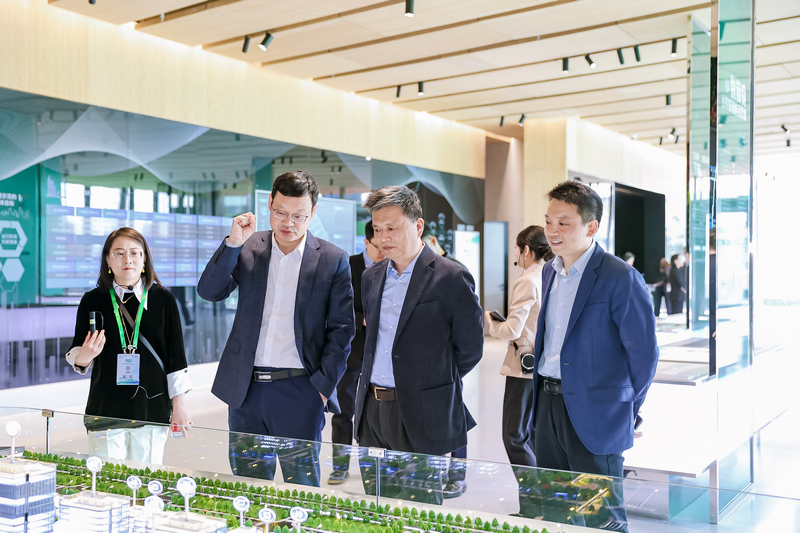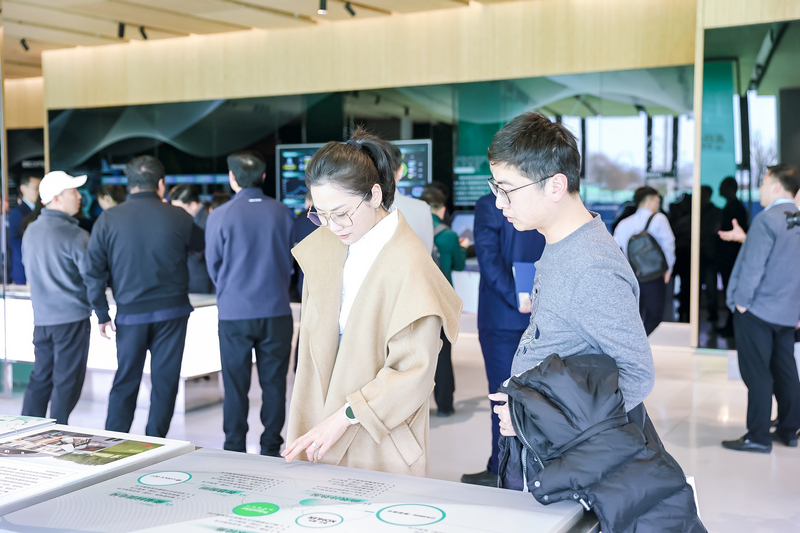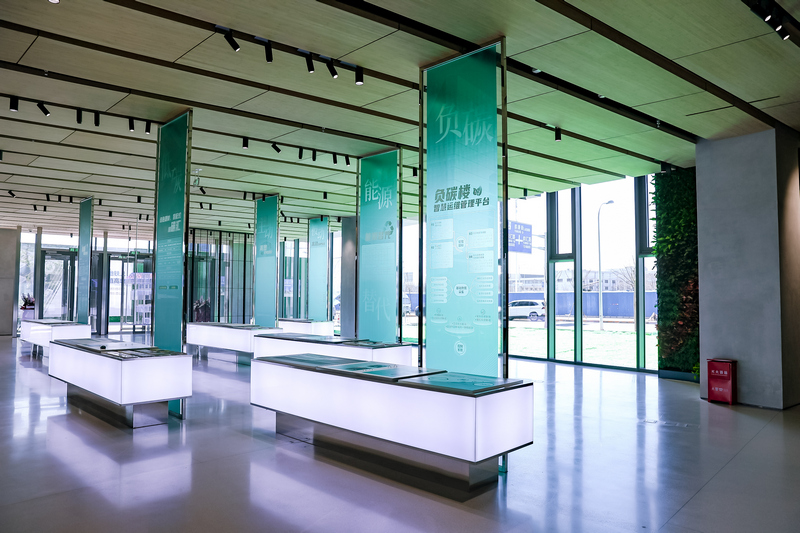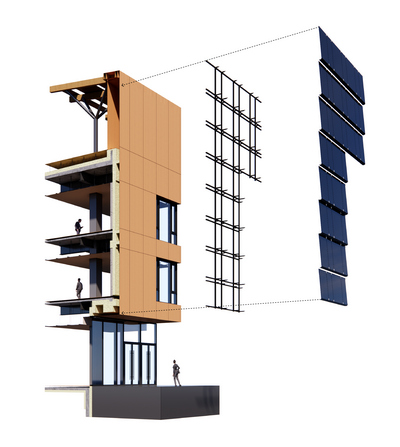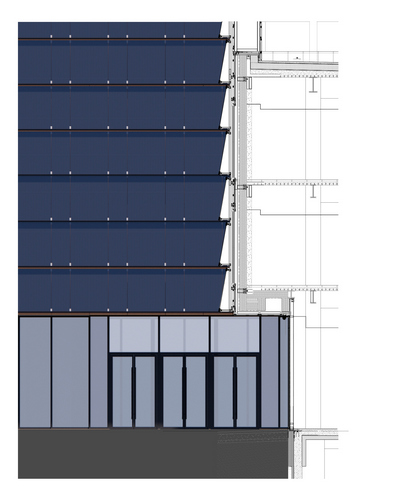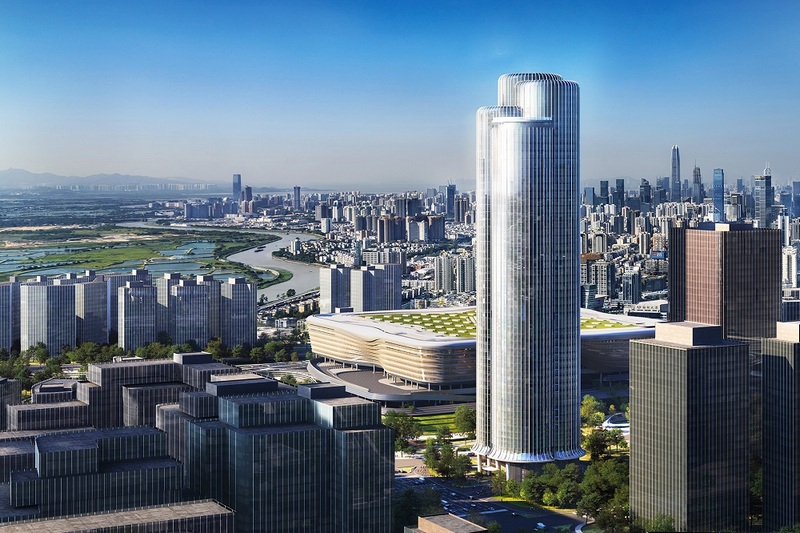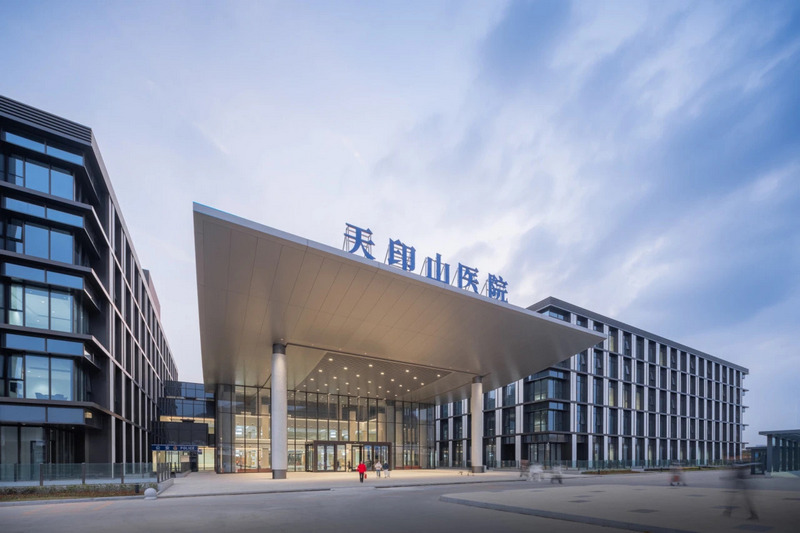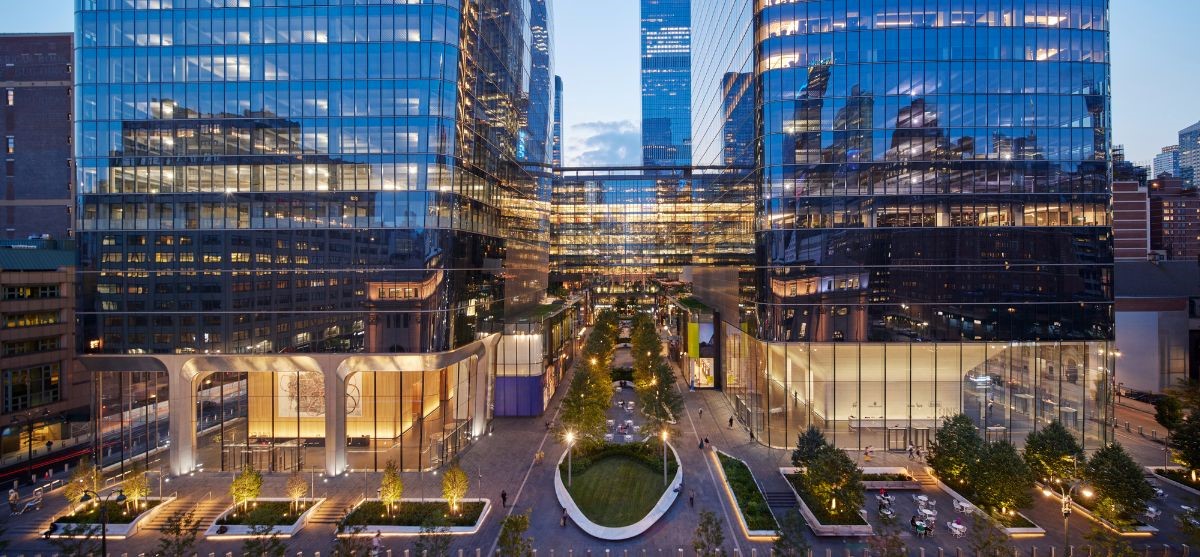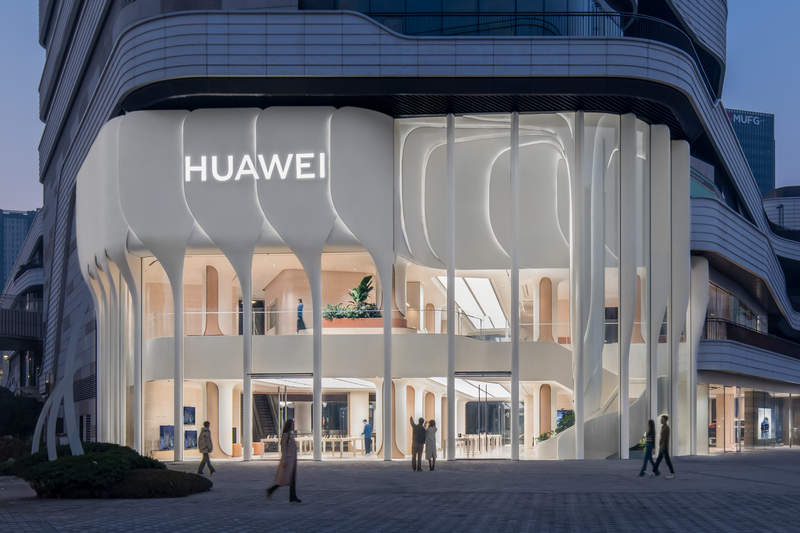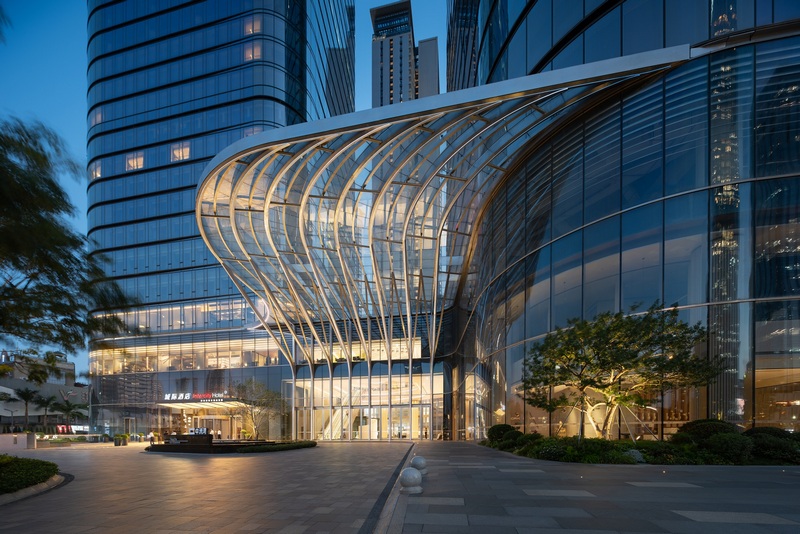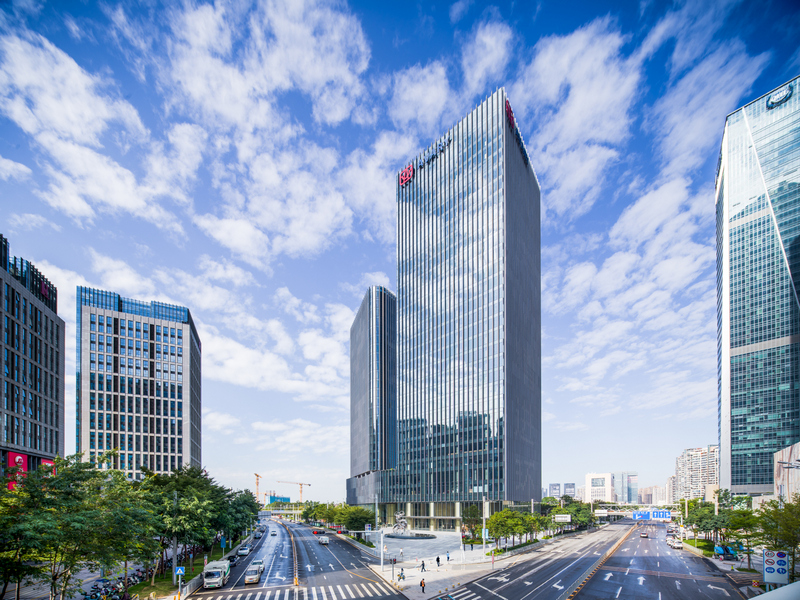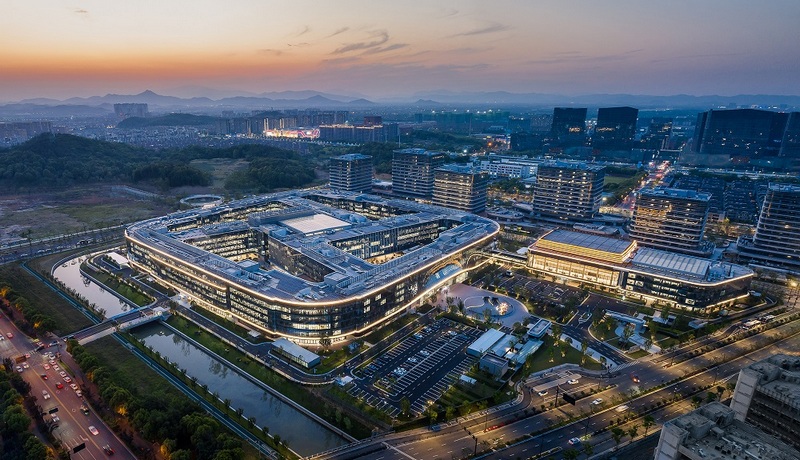The first zero-energy building in Beijing was unveiled at Shoucheng Prospect Park, a project designed by Gensler and co-developed by Shougang Fund and Royal Eagle Group (RGE). Named the “Carbon-Neutral Pavilion”, the building can reach an annual carbon reduction of 96 tons, annual carbon emission of 52 tons, accounting for an emission gap of -43 tons,
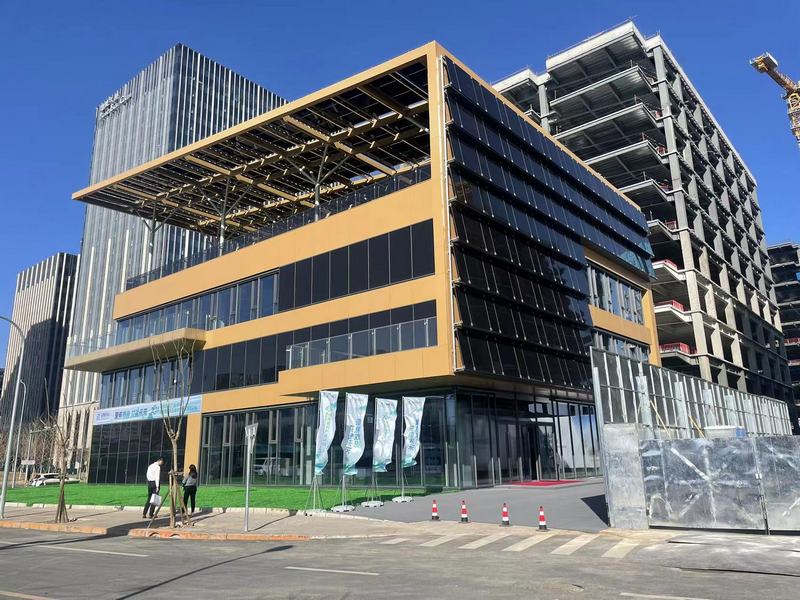
The office park adopts many sustainable technologies to reach carbon-neutrality, such as photovoltaic power generation, energy collection, and high-efficiency curtain walls, giving new life to the land and showcasing low-carbon strategies for the future, paving the way for the transformation of Shougang Group into a leading sustainable resource leading company.
The building caters to showcase the leading low-carbon technologies adopted in the construction and serves as an important pioneering study and breakthrough in the green building industry in China.
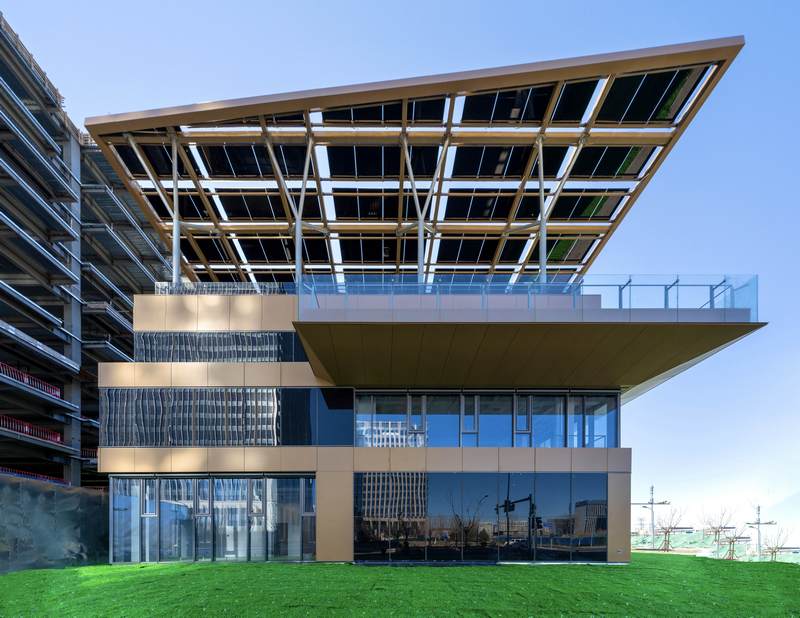
The site of the project was formerly home to the Shougang Group steel factory. In 2020, Gensler joined Shougang Fund and RGE Group to redesign and transform the site into a low-carbon, sustainable office park with a total floor area of 440,000 square meters.
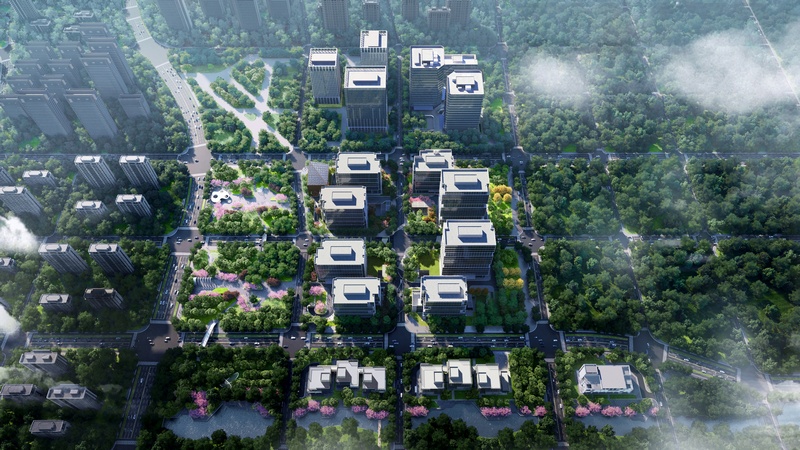
Six low-carbon strategies
It is equipped with six low-carbon strategies: (1) High-performance enclosure system, (2) High-efficiency cooling and heating source and electromechanical system, (3) Solar photovoltaic system, (4) Intelligent control system, (5) Green building materials system and (6) Carbon sink system. The comprehensive use of these systems has greatly improved the energy saving, consumption reduction and energy efficiency of carbon-neutral buildings, which not only balance their own energy supply, but also generate excess energy, to achieve Net Zero-Energy status, which is currently unattainable by other buildings in Beijing, and is second to none in western district in the city.
Zero Energy Building Certification
In order to further promote national green development and China’s dual carbon goals, Shougang Fund, together with Beijing Green Exchange and other units, jointly held the “2024 Low-Carbon Building Industry Forum and unveiling event of the Shoucheng Prospect Park Carbon-Neutral Pavilion” on March 22, 2024 at the site. With the theme of “Focusing on Dual-Carbon Goals and Building a Better Future”, the forum discussed the future path of green development in China.
At the event, two certificates were awarded to Shoucheng Prospect Park Carbon-Neutral Pavilion at the unveiling ceremony – “Zero Energy Building Certification (Design Stage)” awarded by the China Association of Building Energy Efficiency and “Carbon Neutral” building by awarded by the China Beijing Green Exchange.
Transformation of a steel factory into a modern office park
The site of the project was formerly home to the Shougang Group factory. In 2020, Gensler joined Shougang Group and RGE Group to redesign and transform the site into a low-carbon, sustainable office park with a total floor area of 300,000 square meters. The office park adopts many sustainable technologies such as photovoltaic power generation, energy collection, and high-efficiency curtain walls, giving new life to the land and showcasing low-carbon strategies for the future, paving the way for the transformation of Shougang Group into a leading sustainable resource leading company
At the project’s beginning stages, the Gensler design team conducted in-depth analysis and discussions with the client’s design team on the project’s positioning, and reimaging how the project can contribute to the future urban development of the area. The design team hopes to draw inspiration from the heritage of Shougang Area and at the same time, utilizing innovative urban planning and design techniques to redefine and transform the emerging district into a vibrant urban town.With the guiding principles of “Humanity” and “Ecology”, the Gensler design team created an urban framework embraced in nature, comfort and wellness, to create an office campus that could not only stimulate the creativity of tenants, but is also a vibrant place to work, live and play.
The Carbon-Neutral Pavilion
With the debut of the Carbon-Neutral Pavilion, it serves as a pioneering model platform to quicken the pace of low-carbon development of the building industry in China, actively engaging with the industry. At the same time, the space will serve to showcase low-carbon technologies and encourage industry exchange for green and low-carbon enterprises, helping to foster high-quality economic development of the Beijing capital. The 2,400-square-meter building, with four floors, includes a zero-carbon technology exhibition hall, an exchange lobby for various forums, exhibitions, small meetings and other functions.
Passive building design
In terms of passive design, the Carbon-Neutral Pavilion created two double-layer hollow spaces on the first and third floors, and an open staircase between the two spaces forming a continuous vertical space. During the summer months, natural ventilation can be maximized to reduce energy consumption. The story heights and window-to-wall ratios of the entire building have been calculated to optimal efficiency. Overhanging balconies adopt advanced HIT insulated non-thermal bridging construction technology to reduce temperature fluctuations and maximize the reduction of the building’s energy consumption.
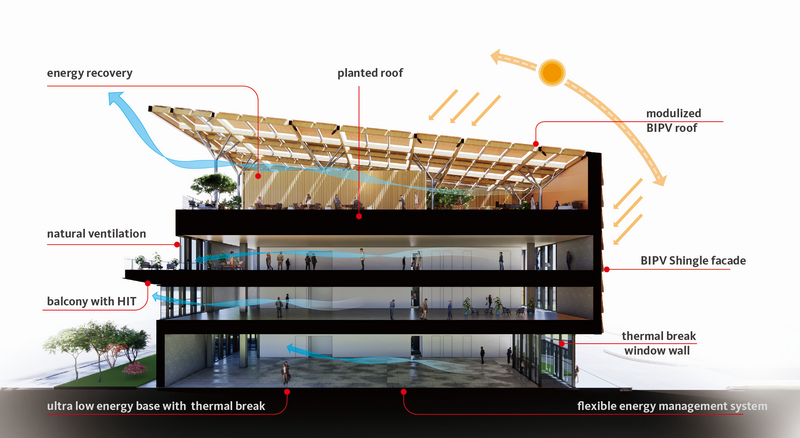
Active building design
In terms of active design, the project is divided into two main parts: the façade and the roof. The façade uses an advanced BIPV (Building Integrated Photovoltaic) imitation metal photovoltaic curtain wall. On the highly solar exposed west and south façades, the curtain wall can be flipped to maximize its solar energy utilization. The curtain wall system also utilizes a thermally broken window frame. The glass is composed of triple-silver, low-e, photovoltaic glass to achieve active and passive energy savings, combined with electric external sunshades.
The roof adopts a modular solar panel system, creating a form high in the north and low in the south to improve the efficiency of solar energy reception. A certain amount of space is left between each module to allow natural light to penetrate to the roof garden. The solar energy is then contained in distributed energy storage for later use.
Metrics – Achieving operational carbon neutrality
Through a series of advanced active and passive low-carbon technologies, this Carbon-Neutral Pavilion can achieve Net-Zero Energy. Carbon emission generated by building operation is estimated to be 49.63 tons per year, while the electricity generated by the photovoltaic roof and curtain wall is 57.04 carbon emissions per year, while excess electricity will be sold back to the government for public use.
Roof structural design
For solar panel on the roof, there are 16 independent load-bearing tree structures, providing a warm ambience to the garden below. Each tree-shaped umbrella acts as a functional work of art.
The Shoucheng Prospect Park “Carbon-Neutral Pavilion” is a seed of sustainable thinking, representing the transformation of Shougang Group from a high-carbon emission factory into a sustainable energy company, reflecting the site’s welcome of more advanced low-carbon technologies, and highlighting Gensler’s social responsibility as a leading architectural design firm.
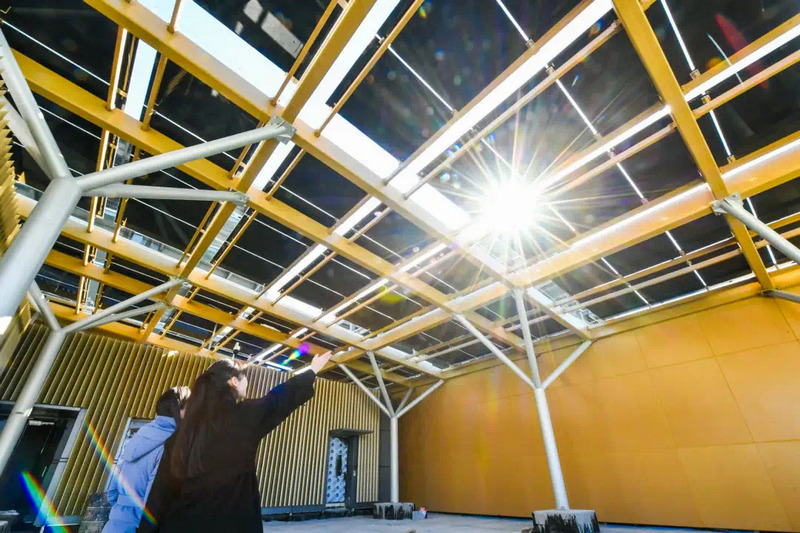
Gensler Climate Action & Sustainability
As the world’s leading architectural design firm with hundreds of millions of square feet of buildings and interior design projects in the pipeline annually, Gensler has a unique obligation and opportunity to focus on sustainability in the built environment.
In 2015, at the UN Climate Change Conference (COP21), Gensler signed the Paris Agreement, agreeing to significantly reduce carbon emissions in our global portfolio of work. To date, Gensler’s designers have made significant progress toward our goals with innovative design techniques and technology. According to our 2021 portfolio performance metrics, the top 20% of Gensler’s portfolio has already achieved performance improvement targets in line with our 2030 goals.
As architects and designers, selecting more sustainable building materials is one of our most substantial opportunities for impact. Last year, the Gensler Product Sustainability (GPS) StandardsTM was introduced which established sustainability performance criteria for the top 12 most commonly used, high-impact product categories selected for the company’s architecture and interior projects. This process will help Gensler designers to understand the level of sustainability performance that would push the industry forward, maintain competitive bidding, and limit challenges to project schedules and supply chains.
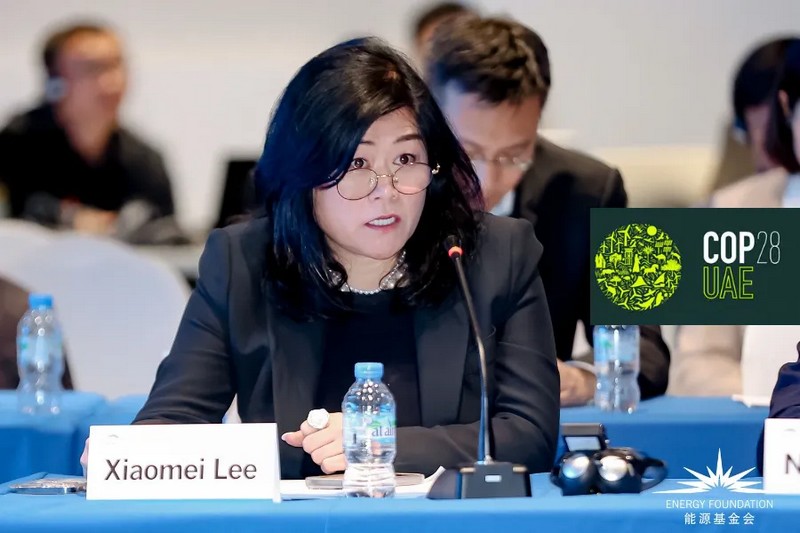
Xiaomei Li, Regional Managing Principal of Gensler Greater China said: “In the face of the severe challenge of global climate change, every person and every industry has a responsibility. To realize China’s 2035 national Dual Control Targets for carbon emissions, we need to accelerate the process of transitioning away from fossil fuels, and the realization of new energy power substitution in the construction sector is a key contributor. ”
Project Information
Project Name: Shoucheng Prospect Park “Carbon-Neutral Pavilion”
Gross Building Area: 2,400-square-meter
Site area: 440,000 square meters (the entire office park)
Client: Shougang Fund and Royal Eagle Group (RGE)
Architect: Gensler
Function: commercial offices, exhibition facilities
Services provided: Architectural design
Completed in 2024
Location: Beijing, China
Consultants
Local Design Institute: Beijing Institute of Architectural Design Co.,LTD.
Façade: Meinhardt Facade (Shanghai) Co.,Ltd.
Façade Engineering: Beijing Jangho Curtain Wall System Engineering Co.,LTD.
MEP: Meinhardt (Beijing) Co.,Ltd.
Landscape: ASPECT Studios
Lighting: Sanseshi Design Institute
Sustainability Standards: China Institute of Building Standard Design & research
Graphics Design: Fangyuan Zhonghe EGD
Carbon Accreditation: Beijing TsingHua Tongheng Urban Planning and Design Institute Co., Ltd.
Interiors: Beijing BIAD DECORATION ENGINEERING & DESIGN CO.,LTD


